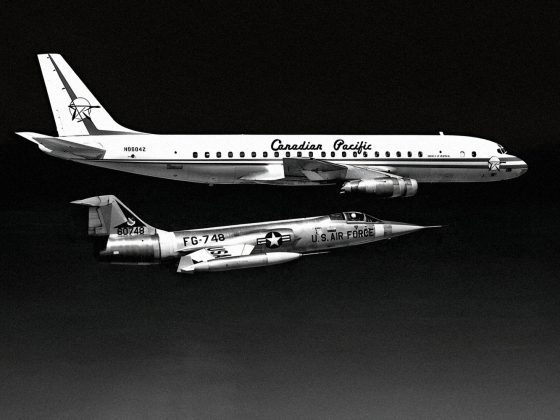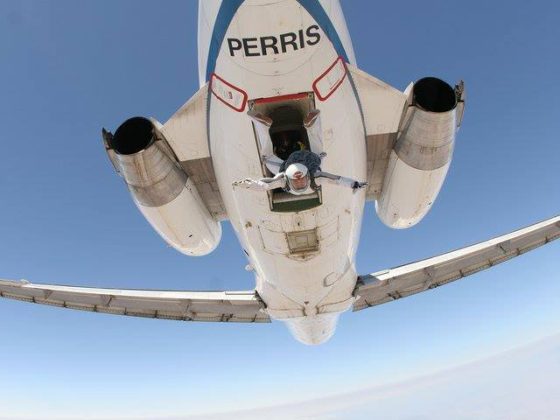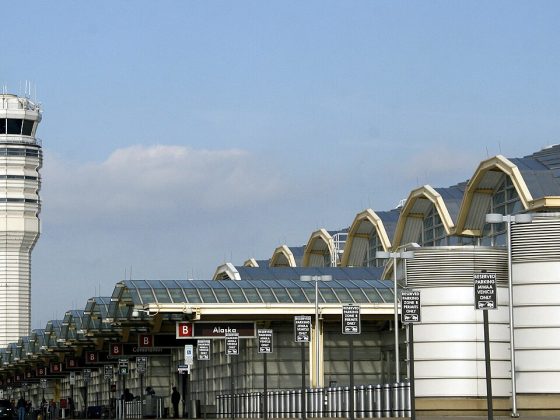Turboprop airliners are not an uncommon sight at America’s airports. But the first turboprop transport to operate in the United States was a modern marvel, the Vickers Viscount. It bridged the gap between traditional propeller-driven piston engine types and the coming jet age.
The four-engine, 48-passenger Vickers Viscount was the world’s first successful turboprop airliner, and it was not an American product; it was British. Its engine design incorporated fewer parts than standard reciprocating engines and the absence of pistons pumping up and down eliminated vibration. In addition to benefiting passengers inside the aircraft, the lack of vibration created a lot less wear and tear on the airframe and instruments.
Although the engines were known for their distinctive high-pitched whine, the cabin of the Viscount was much quieter than its piston-engine counterparts due to the amount of fiberglass soundproofing installed in the sidewalls. Large oval windows – larger than the windows on any other airliner – gave Viscount passengers an excellent view of the world outside.
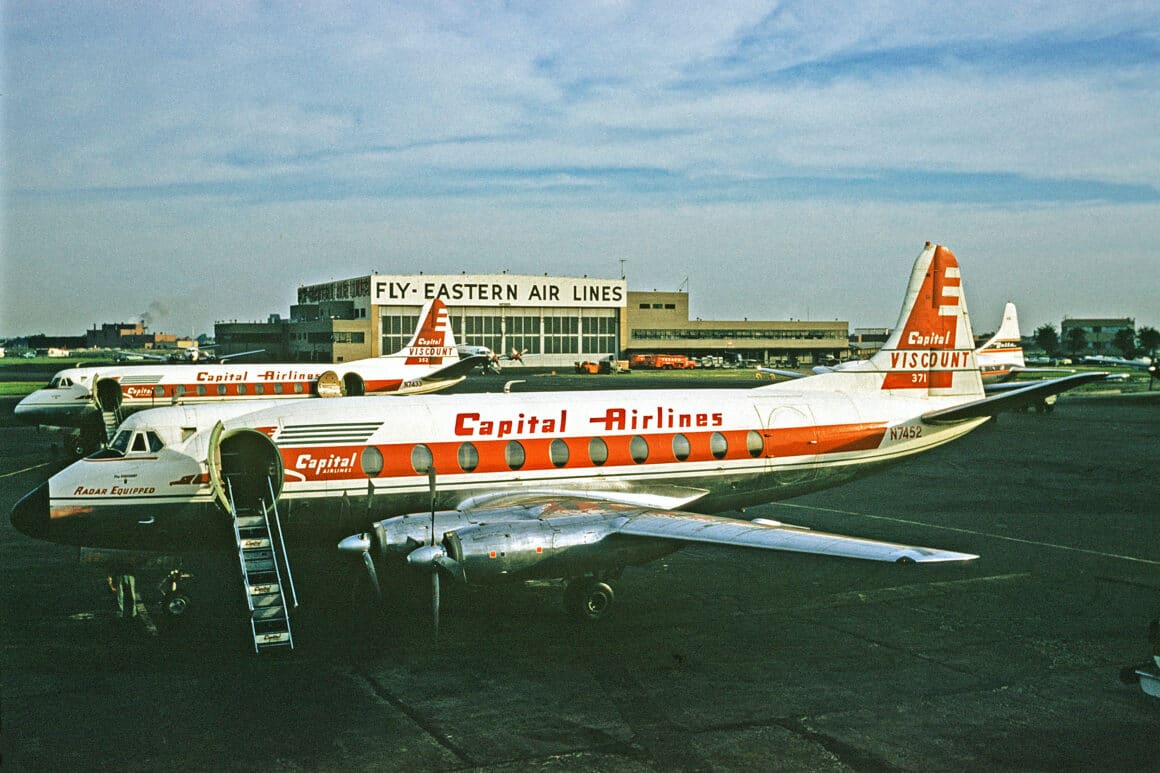
Tradition Is Broken – The Viscount Is Chosen
In 1953, Capital Airlines sent a 9-member team led by its president, aviation pioneer James H. “Slim” Carmichael, to England to study the Vickers Viscount. Within a few years, Capital was deploying 60 of the type throughout the eastern United States.
No U.S.-based airline had purchased a foreign-built aircraft before. Fokker types had been used by some carriers in the late 1920s and early ‘30s, but these had been designed and built by the Dutch firm’s American Division.

Capital introduced its first Viscounts to passengers in July 1955.
With its fleet of brand-new Viscounts, Capital became the first airline in the U.S. to operate foreign-built aircraft and, thus, the first to operate turboprop airliners. As the result of a lavish advertising campaign introducing Capital’s new aircraft to the American public, the whistling jet-prop from England was firmly associated with Carmichael’s airline, and vice-versa.
Two other American carriers – Continental Airlines and Northeast Airlines – would eventually follow Capital’s lead and purchase Viscounts in 1958.
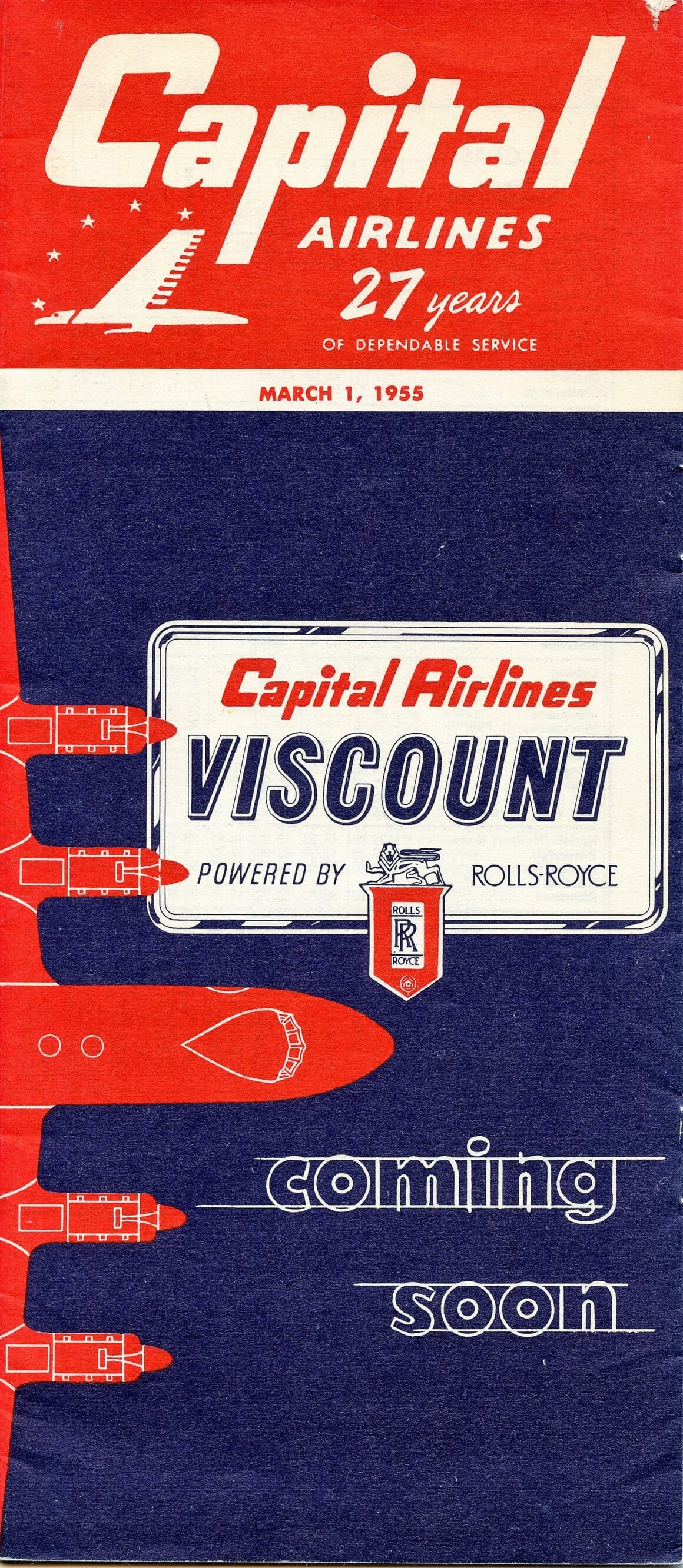
Jet Props: Precursor To The Jet Age
Referred to in advertising as a ‘jet-prop’, a turboprop airliner, in simplest terms, is an aircraft with propellers that are driven by jet engines.
In the summer of 1955, the true jet age for commercial airlines was still three years in the future when Pan American and BOAC would launch Boeing 707 and DeHavilland Comet 4 services, respectively, in October 1958.

The initial foray into commercial jet service with the Comet 1 had been suspended in 1954 after several accidents revealed the need to develop and incorporate design changes. With no jetliners in service between 1954 and 1958, and only piston-engine types serving the nation’s air carriers, the new-technology turboprop Viscount became the most advanced airliner in service. Consequently, for several years, Carmichael’s Capital was a step ahead of every other airline in the United States in its choice of flight equipment.
It should be noted that Trans-Canada Air Lines (TCA) held the distinction of operating the first Viscounts in North America, putting the type into service three months before Capital did. And a few other foreign carriers (Cubana, BWIA, TACA) brought their Viscounts to the shores of the U.S. between 1955 and 1957. In December of ’57, BOAC introduced the jet-prop Bristol Britannia on its London – New York route. But until 1958, Capital was the only carrier operating turboprop aircraft domestically within the U.S.
Capital’s Fleet Before The Viscount
Capital’s fleet in 1954 consisted of 12 older, first-generation Lockheed Constellations, 25 DC-3s and 25 DC-4s. The DC-3s and DC-4s were unpressurized. This was a bit of an embarrassment for the company that was now the fifth largest domestic airline in the United States in terms of passengers carried, surpassed only by the ‘Big Four’: American, Eastern, United, and TWA. Capital’s fleet needed a total makeover.

Well-Patronized Routes And Puddle-Jumper Flights
Capital’s needs were rather unique. Although it was the nation’s fifth largest airline, its network was concentrated east of the Mississippi River, so there were no transcontinental long-haul routes. The company’s average stage length was less than 300 miles. Capital’s busiest route at the time was its non-stop between Washington (National) and Chicago (Midway), a distance of 600 miles, but much of its revenue came from shorter hops in the industrial northeast (later known as the Rust Belt) between big city pairs like New York – Cleveland, Chicago – Detroit, and Washington – Pittsburgh. Added to that was a network of ‘puddle-jumper’ routes.

Capital was required to provide service to more than a dozen places, such as Clarksburg, West Virginia; Rocky Mount, North Carolina; and Williamsport, Pennsylvania, that would have been better suited for a local service carrier.
U.S. aircraft manufacturers Lockheed, Douglas, and Boeing were designing and building long-haul aircraft that were not suitable for Capital’s average stage length. That left the airline studying twin-engine, piston-powered products of Convair and Martin, which would not be competitive in Capital’s main markets where customers would expect to fly on a 4-engined airliner. So, the company looked overseas.


